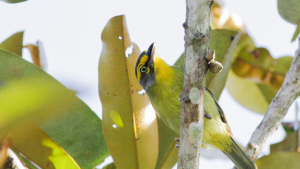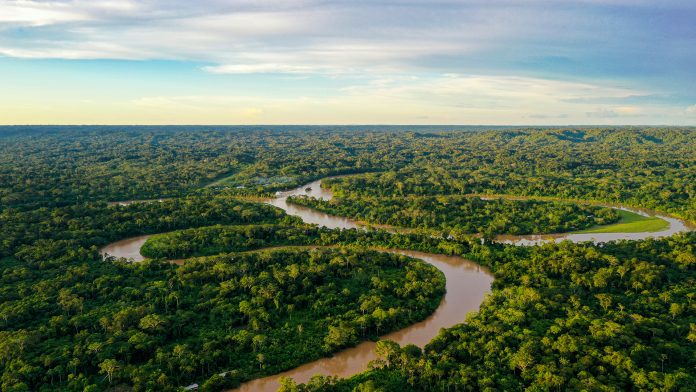Scientists are using ecoacoustic monitoring in the Amazon rainforest to learn how tropical animals are affected by climate change and human disturbances.
An international team of scientists is using ecoacoustic monitoring by deploying a network of microphones in the Amazon rainforest to listen and measure the numbers and species of birds, insects, and other wildlife.
Using ecoacoustics is part of the £1m RAINFAUNA study funded by the Natural Environment Research Council (NERC). The study will provide the first large-scale understanding of how animals native to tropical forests are being affected by climate change and human disturbances.
The team brings together scientists from Lancaster University, Manchester Metropolitan University, and the University of Exeter in the UK; the Federal University of Amazonas, the Brazilian Agricultural Research Corporation (Embrapa), and the National Center for Monitoring and Early Warning of Natural Disasters (CEMADEN) in Brazil; and the National Museum of Natural History in France.
Tropical forests are under threat
Around 17% of primary forest has been affected by human disturbance in the Amazon. This includes logging, fires, and deforestation.
Dry season rainfall has plummeted by a third and climate change and deforestation have increased regional temperatures by 2.5°C.
Learning about the effects of these threats has largely come from studying trees through surveying plots and using remote sensing technologies.
However, less is known about how tropical animals are affected by climate change and human disturbances. This is despite tropical forests being home to more than 60% of vertebrate species – being the most diverse terrestrial ecosystems.
“Tropical forests are facing a perfect storm from changes in how land is used, other human disturbances and climate change,” said Professor Jos Barlow, Principal Investigator of RAINFAUNA from Lancaster University.
“Despite this, we currently lack a good understanding of how these large threats are affecting the animals living within tropical forests across wide areas.”
Ecoacoustic monitoring will help provide evidence on how tropical animals are affected by climate change
The researchers will measure the number of species of birds in the understorey by using new modelling techniques that consider variations in climate and vegetation.
Microphones will also be installed in the forest soil to measure the density of insects and other invertebrates. This will reveal their important roles in the forests, such as decomposing material and mixing soil layers.

Dr Oliver Metcalf, expert in ecoacoustics at Manchester Metropolitan University, said: “With the use of ecoacoustic monitoring, and novel modelling, enabling us to gather valuable data across large areas of forest we will for the first time be able to provide evidence-based estimates of contemporary, and future, densities of these bird and insect species. This will produce results that will be invaluable for both scientific discoveries but also for the management of these precious rainforests.”
Microclimate has the potential as a key indicator of forest health
The researchers are also examining the relationship between microclimate and animals within the forest. The researchers believe that microclimate can provide insights into the densities of species within tropical forests – helping to show how animals are affected by climate change and other human-related activities.
“There is growing evidence that microclimate within tropical forests is key to understanding fauna as this is the climate experienced by the animals themselves and it is well established that it changes enormously in disturbed forests,” said Dr Ilya Maclean of the University of Exeter.
“With our work in RAINFAUNA we aim to develop the first large-scale models to help realise the potential of microclimate as a predictor of tropical forest biodiversity.”
Dr Joice Ferreira of Embrapa, said: “By improving our understanding of rainforest fauna, this work will provide information vital for improving conservation policies across the Amazon.”









